The content of the article
Today, the undeservedly forgotten ficuses are again at the height of fashion at flower growers. But there was a time when this unpretentious plant was in every house. Care for it is minimal, but the return in the form of lush foliage is beyond praise!
The current selection offers such variegated forms that it is a sin not to have such beauty on the windowsill. How to care for ficus at home? In principle, not very difficult. We describe the most important aspects. If they are followed, care for the ficus will not bring unnecessary trouble.
Land composition and capacity selection
The material of the pot is absolutely irrelevant for the ficus, but its size is even very large. Do not plant the plant in too large a container, otherwise it will become a little impudent. And it extends a very decent size, because in natural conditions their height reaches 5 meters. Although, if your area allows, then boldly grow ficus in a huge tub. He will thank you with huge leaves.
The composition of the soil is absolutely standard. 2 parts of good fertile garden soil are mixed with 1 part peat and 1 part pure coarse sand. That's all, nothing else needs to be added.
Naturally, a drainage layer is poured onto the bottom of the pot. Perhaps this rule applies to absolutely all indoor colors. Small expanded clay, small pebbles or gravel, granite chips - these are the most suitable materials. You should not neglect this item, because it helps to solve many problems. For example, the main function of removing excess moisture will prevent rotting of roots and the appearance of various diseases.
Lighting and temperature
Ficuses love light. But not so crazy. Therefore, it is better to grow it in light shading, without direct sunlight. You can put the pot on a stand next to the window, but not on the windowsill. This light will be enough.
Ficus will grow perfectly in the back of the room, without access to sunlight. In this case, additional illumination with special phytolamps is mandatory.
The temperature of the contents varies depending on the time of year. In summer, ficus will be most comfortable at + 24-26 ° C. In winter, he prefers + 17-19 ° C.
In principle, ficus tolerates a temporary decrease in temperature quite easily. The only thing is that he is slowing down in growth at this time. Critical for a plant is a drop to + 12 ° C. Then it just drops all the leaves and is going to say goodbye to you.
Watering and humidity
Ficus loves high humidity. Therefore, they need to be regularly sprayed with slightly warm water. Or put next to the pot additional containers with water, wet expanded clay, wet moss.
After drying, spots may remain on the leaves. This is from too hard water. If the liquid is settled, filtered or purified, then there will be no spots. Another reason is dust on the surface of the sheet. About once every 12-13 days, wipe the leaves with a soft cloth or rag. Then dust will not accumulate, so you can forget about the spots.
Watering should be regular. In summer, it is recommended that the entire earthen lump be kept slightly moist. To do this, it is regularly wetted from above. About once every 3-4 days. Critical drying occurs when the top layer of earth in the pot dries to a depth of 3-3.5 cm. In this case, expect a stormy leaf fall.
When overflowing, the first sign is wilting and wrinkling of leaves. The second is the beginning rot of the roots. Watch for this.It is better to water often and little by little than once a month to splash a liter mug into the pot.
In winter, ficus is watered much less often. About once every 10-11 days. Again, look at the moisture of the soil. If in the cold season you keep the plant in a hot, dry room or next to a heating device, then it is worth revising the watering regime, for example, to increase its frequency.
Good service will have special beacons. They are stuck in the soil and look behind the scale. When the earth dries at a certain level, it will change color. This will be a signal for watering.
Fertilizers and fertilizers
Starting in March and ending in October, the ficus is fertilized approximately once every 14-16 days. Certainly only after the next watering, so as not to burn thin young roots. You can use any complex mineral fertilizer for top dressing. Or buy ready-made sticks at a specialty store. They are stuck in a pot and after each watering the ficus will take as much food as it needs. Granules (tablets) have the same property. They are also dug in the topsoil.
Just strictly follow the dosage! Do not exceed it, otherwise ugly deformed leaves will begin to grow in the ficus. And choose those whose packaging says “for ficus.”
A much more grateful plant responds to organic goodies. It can be a herbal infusion diluted in a proportion of 1 to 10. Or, once a year, replace the top 2-2.5 cm of soil with fresh, well-ripened humus. Just do not overdo it, otherwise the trunk simply can not withstand the entire mass of its leaves and may break.
Diseases and Pests
Most pests of indoor plants are indifferent to ficus, except for spider mites and scale insects. In this case, you will have to use insecticides. Choose anyone whose packaging says "suitable for indoor flowers." Processing is always done twice, because once is not enough to completely destroy enemies.
If you are an opponent of chemicals, then you can try to thoroughly rinse the leaves and stem with a strong solution of laundry or potash soap. Only be sure to then rinse the plant with warm water from the remnants of the foam. Be sure to cover the soil in the pot with dense polyethylene or cling film.
Among the sores, ficuses have chosen various rot. If the leaves are affected, then at the initial stage it is enough to wash them with soapy water. With a large degree of damage, it is better to completely remove the leaflets that have sunk.
Root rot can kill even the most magnificent plant in a matter of days. Methods of healing from it do not exist yet. It is only in your power to cut as many healthy cuttings as possible and try to root them.
The causes of rot are excessive watering, drafts and a sharp temperature drop. By eliminating these factors, plant disease can be completely avoided.
Some valuable tips
- Ficuses do not like to be disturbed. This applies to transplanting, changing places, and even turning the pot. They chose a container, planted a plant and that’s it. Do not touch him anymore. Do not move to another place, do not turn the pot with the other side to the light. No unnecessary touches other than standard leaf cleaning during hygiene.
- Sometimes the owners want to have a compact fluffy bush of ficus, and a lone stick sticks out in the pot. And it grows not in width, but in the ceiling. Stop. And who said that ficuses should not be pinched for better branching? We wipe the blade or knife with alcohol, carefully cut the barrel at the desired height. We treat the slice with a finely crushed tablet of activated carbon. And we are waiting for the side shoots to appear. In turn, they can also be trimmed. Then shoots of the third order will begin to grow. And now you have the treasured lush bush with chic leaves.
- The cut off top is not thrown away. We put in a glass of water.We wait for roots for two weeks, then plant in a suitable pot in the right place.
- Some owners do wonders in general. Three plants are grown simultaneously in the pot at about a height of 1 m. Then, pinch the tops, and the stems themselves are plaited into a tight pigtail. Thanks to its flexibility, this is done very easily. But after the appearance of the side shoots, an exclusive figure is obtained with a magnificent cap on the top of the head. It looks very impressive, and the care is absolutely identical to the care of a single plant.
- In autumn and winter, ficus can drop several lower leaves. Do not rush to look for the reason for improper care or maintenance. This is a completely natural process. An alarm should be struck when leaf fall begins in spring or summer, and the loss of the entire leaf cover also becomes threatening.
How to care for ficus at home? Our grandmothers knew perfectly all the subtleties and secrets of content. The time has come for us to revive the ficus in every house. Moreover, this is not difficult at all. A few correct recommendations and a love of the plant - that's all you need for quality care.
Video: how to easily and quickly propagate Benjamin's ficus

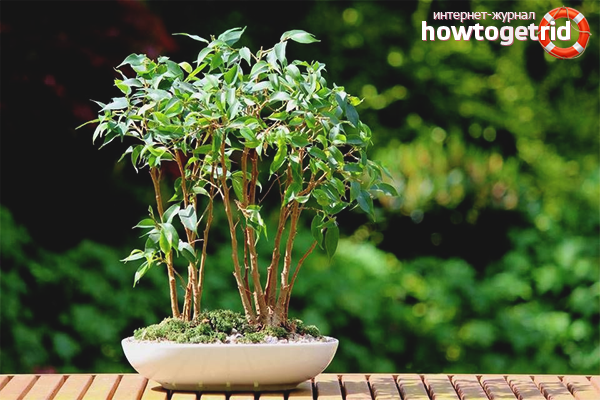
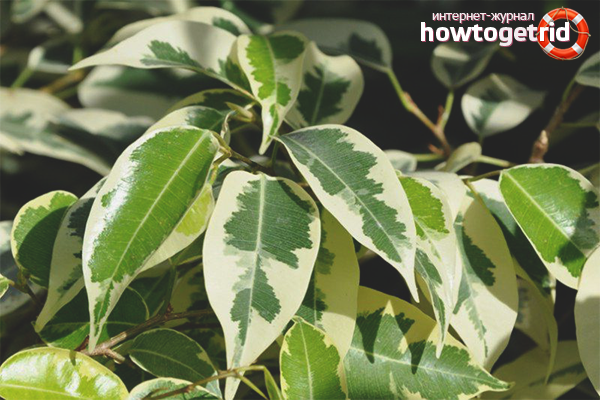

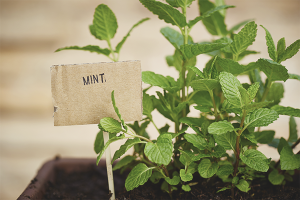
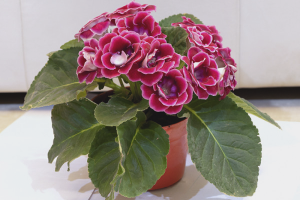
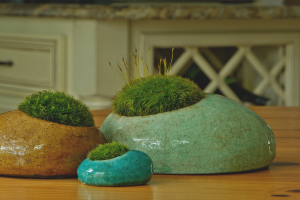
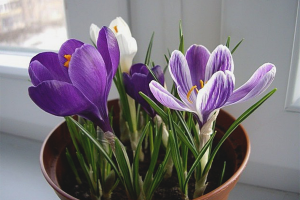

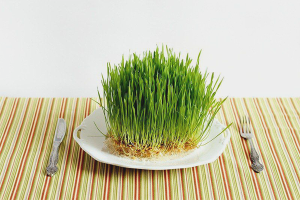
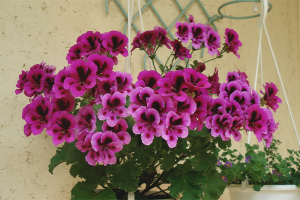
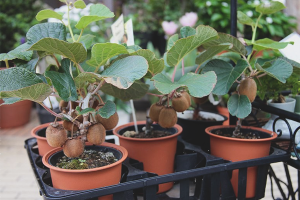
Submit